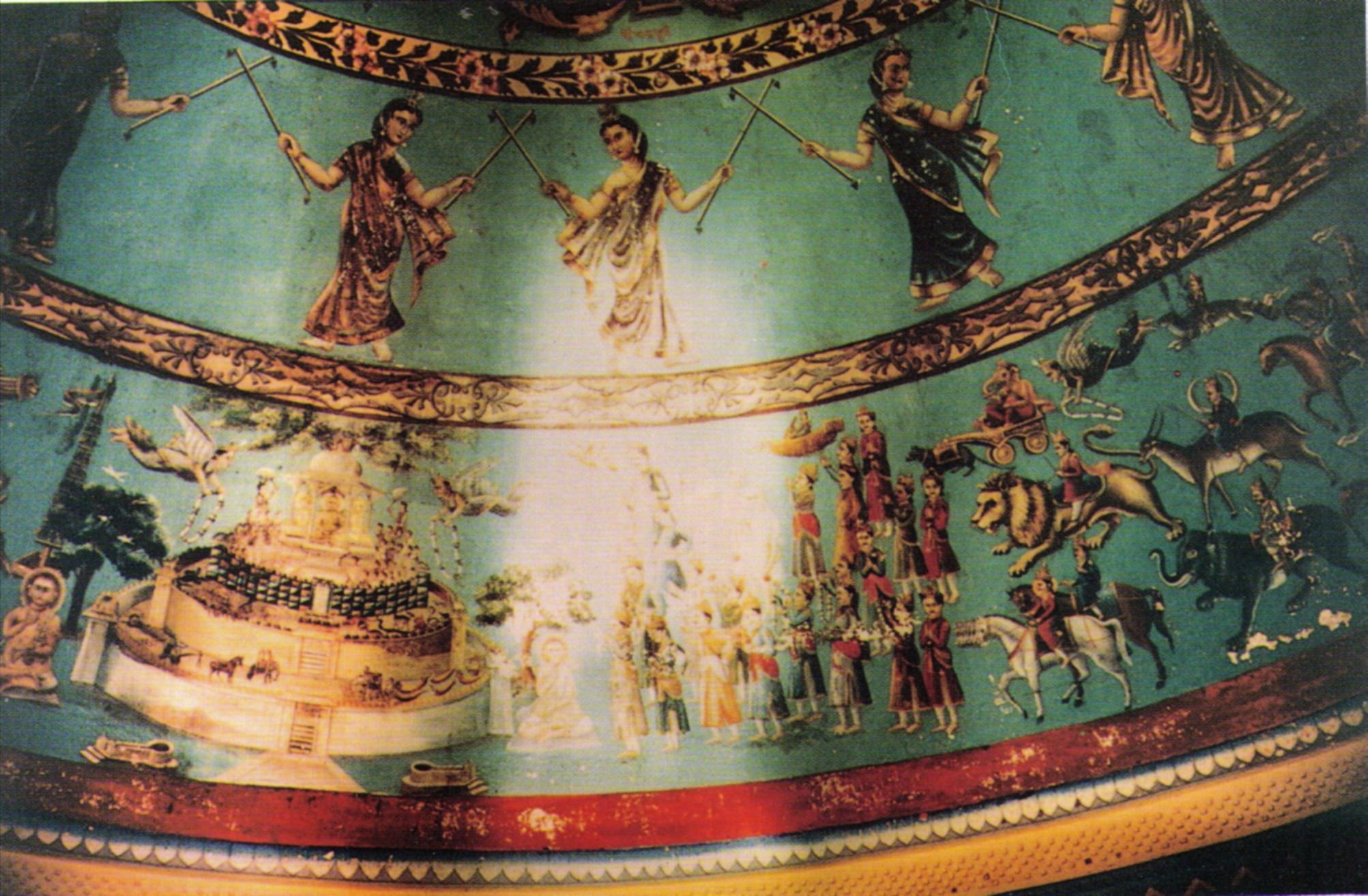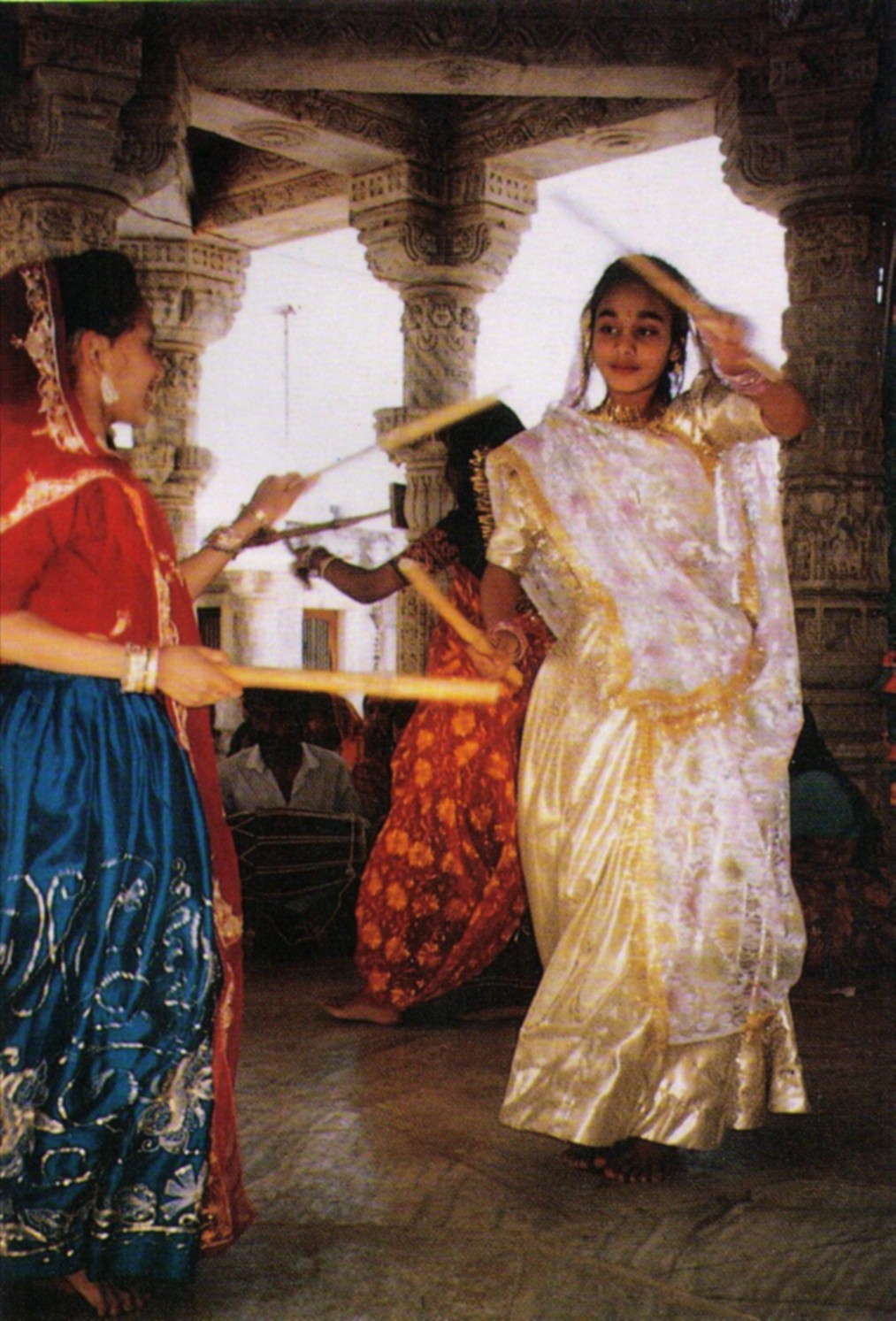"Indian people are essentially a musical people. They use music for almost every function in life; whether it is a religious ceremony or a social function or an agricultural pursuit they won't hesitate to use music to lighten their hearts and make their burden less heavy" (R. Srinivasan Facets of Indian Culture, 3rd. ed. 1980: 48).
Music and Dance in Jainism
Having come to Jainism via Theravada Buddhism, a creed that - leaving aside the monotonous chanting of the monks - permits of no music in its temples. And as in my readings about Jainism I have never come across a comprehensive evaluation of Jaina music, I concluded that there was none. Does not Mahavira advise his monks and nuns to stay away from places where sounds of musical instruments can be heard? “A monk or nun,” says he, “should not resolve to go where they will hear sounds of stringed instruments, kettle-drums etc” (Acaranga Sutra 2,11,1).
 |
Fig. 1. Detail of a painted dome in a temple on Shatrunjaya Hill showing in the upper half a figurative dance indicative of the joyous mood associated with the mythical event (samavasarana) pictured in the lower half. |
Only after I submitted myself to the impulse of going to see Jainism instead of just studying it from books, I discovered that there is Jaina music and, to my delighted surprise, not just a solemn kind of incantation as someone might expect, whose knowledge of Jainism is confined to having studied its doctrines, but that there exists in Jainism the artistic capacity of producing, not seldom on the spur of the moment, sonorous seas of sounds which at times reach hights of jubilation that stir the participants into stepping forward and dancing.
It woud need someone better versed in matters of music and dance than myself to put this aspect of the Jaina religion into a wider perspective. I must confine myself to the attempt of inducing my non-Jaina readers to go, hear and see for themselves. They would not return disappointed. The best time, next to certain major ceremonies such as the consecration of a new idol, is in the early evening when the temple-rite of arati, a ceremonial adoration of the Jina with kindled wicks, is performed.
 |
Fig. 2. The photo was taken in the Jain Temples at Mirpur in 1992. It shows that in Jainism tradition is still very much alive (compare the female dancers with the depicted dancers on Fig. 1 above). |
“We have”, to quote from a lecture by the late Kumari Parul Troliya, “little knowledge and record of contributions to music by Jainas. There are several creations like Gita Vitaraga in Sanskrit and Kannada along the lines of Jayadev's 'Gita Govinda'. (...) Jaina poets like Mahayogi Anandhan, Chindananda, Banarasi Das, Dyanstrai, and others, have created beautiful musical pieces in form of devotional lyrics, replete with indications of ragas. They are in no way inferior to Kabir, Meera or Surdas.(...) To conclude, the contribution of Jaina culture to Indian art, literature, music etc. is enormous but of which we, the Jainas ourselves, are not fully aware. Let's be conscious of it, and enrich the rich heritage of ours” (From: Gomatavani, Vol. IV, No. 5, Shravanabelagola, 1989).
 Kurt Titze
Kurt Titze